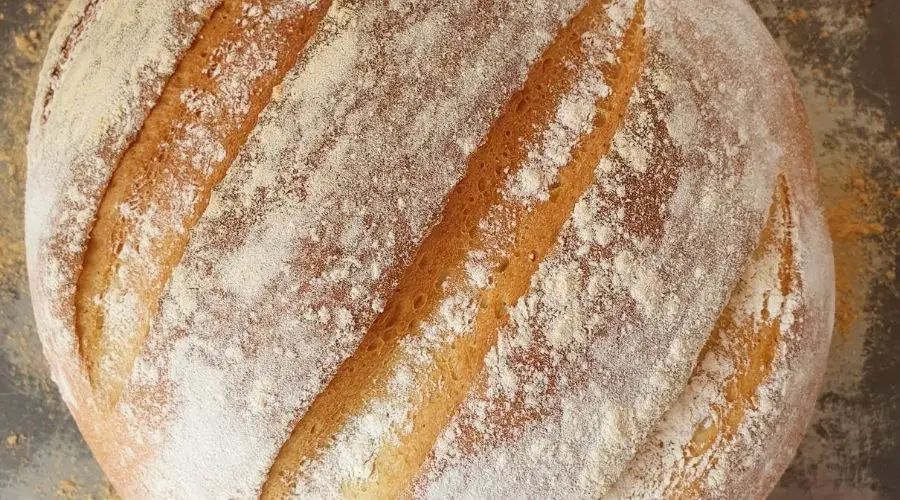Yeast is often thought of as one of the more complicated aspects of bread making, but it can be very easy to use depending on the type you choose.
In this post, I’m going to compare fresh yeast vs dried yeast and explain the results you will see from each one.
I’ll also show you how to use both types of yeast along with tips and information all about yeast.
What is fresh yeast?
Fresh yeast is a micro-organism which once activated starts to ferment and produce bubbles of carbon dioxide which allows the dough to rise.
Fresh yeast is generally compressed and sold in blocks although you can buy fresh yeast online, it’s not readily available in supermarkets.
The shelf life of fresh yeast is much shorter than the dried versions, which would explain why it’s not used much nowadays.
What is dried yeast?
Like fresh yeast, dried yeast is a living micro-organism. It’s dried and sold in small granules for a longer shelf life.
Once dried the yeast is in a dormant state and will reactivate once it’s rehydrated during the bread-making process.
Dried yeast is also known as, instant, active or easy bake yeast.
It’s very popular with home and commercial bakers and is readily available in most supermarkets.
How much fresh yeast do you need for bread?
As a general rule for a standard loaf of bread where the recipe calls for 500g of flour, I use 20g of fresh yeast with one teaspoon of sugar.
This works out at 4g of fresh yeast per 100g of flour, for example, if the recipe tells you to use 300g flour multiply 4g by three, which equals 12g of fresh yeast.
You can replace dried yeast with fresh yeast in most recipes if the recipe uses sugar use some of the sugar to activate the yeast instead of adding more to the recipe.
TIP: Not sure if you have all the necessary bread baking equipment at home? Check out my recommended picks below (Amazon links):
-
- Scale: Nicewell 22lb Digital Kitchen Scale
- Mixing Bowls: OXO Stainless Mixing Bowls Set
- Pastry Scraper: OXO Stainless Pastry Scraper
- Loaf Pan: OXO Non-stick Loaf Pan
- Kitchen Thermometer: ThermoPro Digital Thermometer
- Stand Mixer (optional): Kenwood Kmix Stand Mixer
How to use fresh yeast
Fresh yeast comes in a block form and needs to be activated with sugar to form a liquid before it can be used in the dough. Follow the instructions below to activate fresh yeast:
- Measure the yeast in a small bowl or cup
- Add a teaspoon of sugar to the yeast and leave it for a minute or so.
- Stir the yeast and the sugar together and it will quickly turn to liquid.
- Add the yeast to the other ingredients when mixing your dough, taking care not to let it have direct contact with salt before it’s mixed.
Fresh yeast vs dried yeast compared
Both types of yeast come with their own merits and although fresh yeast is more difficult to get hold of and tricker to use, it’s definitely worth a try if you’ve not used it before.
In the table below I’ve highlighted my findings through testing dried yeast and fresh yeast against each other:
| Yeast type | Rise/proof speed | Bread texture | Bread flavour |
| Fresh Yeast | Slow – took an extra 2 hours | Heavier than the dried yeast loaf but still a nice loaf | Better than the dried yeast version |
| Dried yeast | Fast – first rise took 1 hour | Light and airy | Still good |
So is fresh yeast better than dried yeast?
The verdict is, the dried yeast performed much better for rising speed and texture but the fresh yeast produced a better flavour, so it really depends on what outcome is important to you.
I love the smell of fresh yeast and this flavour really carries through to the finished loaf.
The fresh yeast dough also benefited from a longer rise which leads to a better flavour. If I have the extra time for rising I do like to use fresh yeast from time to time.
You can also recreate a slower rise using dried yeast by using a bit less dried yeast and or by rising it in a cool place or even overnight in a fridge.
For this test I compared yeasts using Allinsons Easy Bake Dried yeast (available in most supermarkets) and Bioreal Organic Fresh Yeast which I bought from Bakery Bits.
The test was carried out at a normal room temperature (not hot and not cold).

Using sourdough with fresh yeast
Sometimes when I make bread I like to add a small amount of sourdough to a traditional bread recipe.
This adds some extra flavour to the bread without having to wait for the long rise that you need for sourdough it also helps the fresh yeast along a little bit.
I add 50g of sourdough along with 20g fresh yeast to a bread recipe containing 500g of bread flour. You may just need a little less water depending on the hydration level of your sourdough.
Summary
I hope this has helped you to understand the pros and cons of fresh and dried yeast. I recommend doing a bit of experimenting to see which you prefer.
You may also like the following articles:
